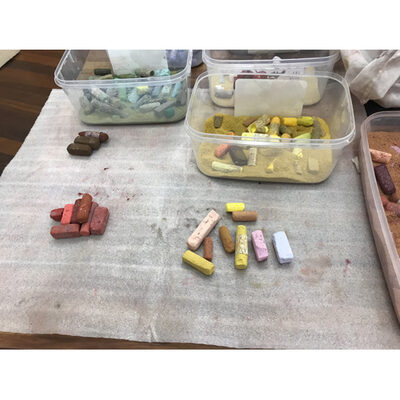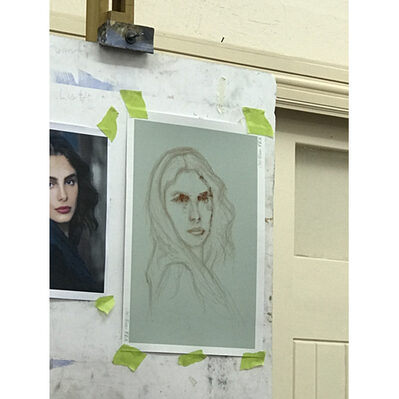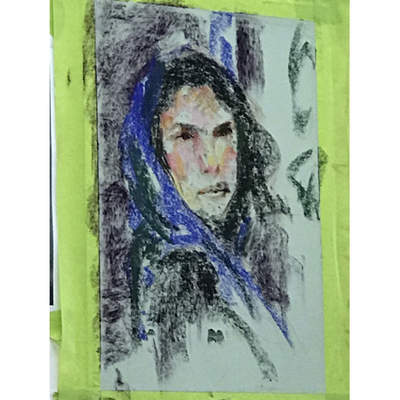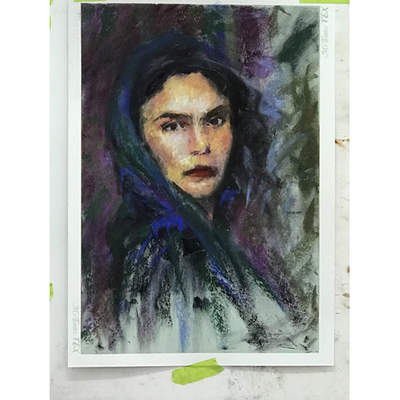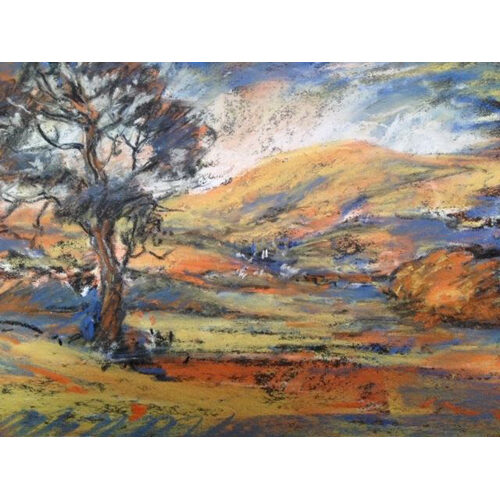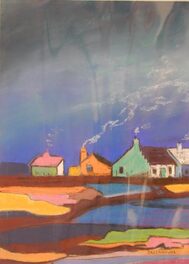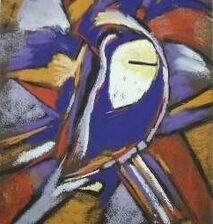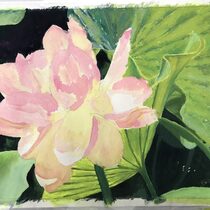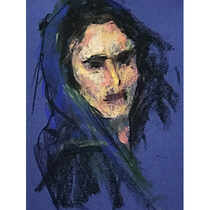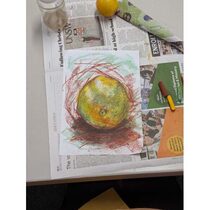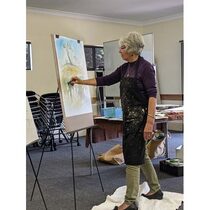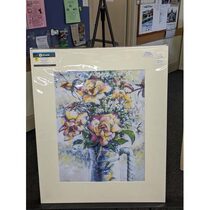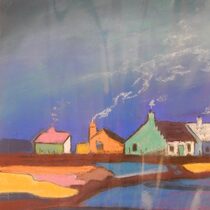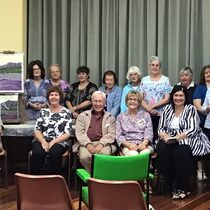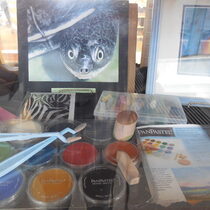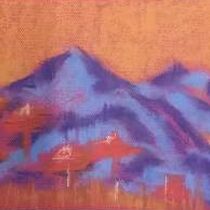The First of the Anniversary Articles
January 2021
Brief
We would like to ask our past Tutors to reflect on what it is in their own Art Journey, that lead them to the point they are now in that journey. What influenced them, people who inspired them, why they teach, what changes have you encountered in the last 20 years in your art practice, art materials, surfaces, styles, techniques, how have you evolved as an Artist? These are many ways we can look at the development of our Art Practice. We would be delighted if you would take the time to do this and share it with us in the form of an article to be published in our Dusty Dialogue. In 2021 we are going to have a series of special articles in the DD and also on our website. The articles will then also form a special edition of the DD at the end of the year to commemorate our 20th Anniversary as a keepsake for everyone
Margaret Evans – My Art Journey
I took the traditional route into Art, by graduating after 4 years at Glasgow School of Art with a Diploma in Art (Drawing & Painting) D.A., followed by a year at the University of London’s Institute of Education for a teaching certificate, A.T.C, which usually leads to becoming a teacher in schools, which did not appeal to me at all! Being predominantly a portrait painter at this time, I needed to get my name ‘out there’ and be known for what I did best – there is no point in being good at something if no one knows about it!
Through gradually meeting and working with art material manufacturers, in particular pastel makers, my work was seen by a big audience, as it was not only used for publications and adverts, but recorded on video for teaching techniques, and subsequently television. As this audience grew, so also did the catchment widen, as I gradually received invitations to demonstrate and teach from all over the UK and Europe, and later, the USA. My Art Journey was literally sending me out, travelling around the world, meeting other well-known artists who also travelled globally. My husband and I had found a way to see the world in the course of earning a living! We had also by this time, bought an old tumbledown farm steading back in Scotland, and started a business of running art workshops and international painting holidays – Paintaways – all while rearing 2 children and umpteen cats, dogs and trying to build a home!
By now, after about 35 years, we have travelled around the world, as far as Australia 3 times, India 3 times, USA (lost count), as well as many annual trips to Europe, all in the name of Painting! Although trained as an oil painter, my passion for pastels forms the basis of my now collectable artwork, and I have an entire library of books and painting diaries/journals, which not only provide me with a lifetime’s memories of the Art Journeys we have travelled, but an endless source of inspiration for painting for galleries and exhibitions.
Sadly, Covid has stopped our wonderful Paintaways for the foreseeable future, but my Art Journeys continue in the studio, painting scenes from beautiful places we have visited, and in particular, creating a healthy demand for my Scottish scenes. I continue to write books on techniques and adventures with Pastels and feel enriched for the wonderful friends we have made along our journeys, who still keep in touch, and many who purchase and collect my work internationally. Yes -Art Journeys have been a great way to see the world and appreciate what a wonderful world we live in. We all just have to learn to look after it better, so it will be there for many more generations of young artist travellers to make their own journeys.
Over the years, meeting many manufacturers and artists, my pastel stock has grown beyond imagination. What started as a few sets of Daler Rowney’s and a lucky chance to buy some Girault from a shop that was closing down, launched my pastel journey with good brands, & I added to them along the way, finding more brands in France such as Lefranc & Bourgeouis, & anything else that caught my eye, even helping Daler Rowney to develop their pastel pencil range.
At that time most papers were similar, such as Ingres, Canson and later, Sennelier’s La Carte. However, none of these were particularly good for adding water to, and as I developed new techniques by adding water or oils to pastels, creating different textures, I searched for more supports. By now, visiting the USA and Australia led me to try out heavier supports and I have since loved and used Art Spectrum’s Colorfix papers and boards. My pastels now consist of Terry Ludwig’s, Blue Earth, Mount Vision & Art Spectrums. My techniques are varied, but my singular most applied piece of advice is to try EVERYTHING! There are no bad pastels, supports, techniques. There are thick, thin, soft, hard, powdered versions, and they all have a use in different ways. Just don’t get stuck in your ways, predictable and monotonous! Be prepared to take risks, explore, diversify, experiment and have an open mind. Try diluting pastels with water. Why should that be difficult? Pastels are pure pigment. So, treat them as you would with paints. Sometimes the subject dictates to me which style, technique or mood I want to create.
Many artists have inspired me along this journey, and most of them are not pastel artists! They are stunning oil painters, or brilliant watercolourists, too numerous to mention by name, but each one inspires a mood in their work that tempts me to apply it in my pastels, whether it is subtle, soft, ethereal, or dynamic, dramatic moods.
Don’t try and copy other artists you admire. Make up a composite of different elements you like from various artists and apply them to your own work.
And always keep an open mind, willingness to learn and take risks. And your own journeys will begin!

























